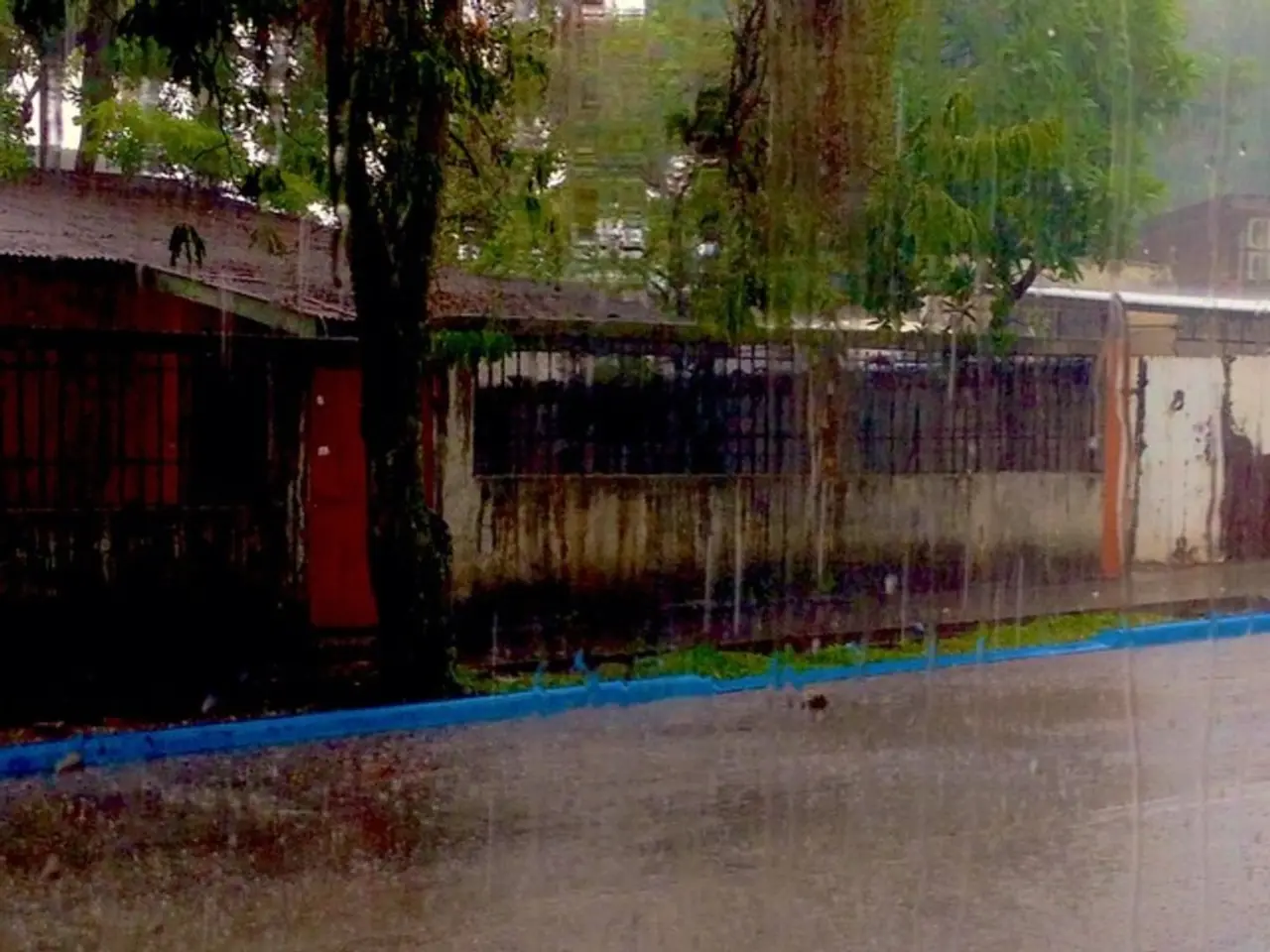Transforming Terrain: The Impact of Landslides and Floods Reshaping India's Urban Areas Gradually
Heavy Rain and Flooding Affect Multiple Regions in India
Heavy rainfall and flooding have caused havoc in various parts of India, with several regions facing crisis situations. The India Meteorological Department (IMD) has issued warnings for extremely heavy rainfall in Sikkim and Bihar through August 5, and very heavy rainfall in Tamil Nadu, Uttarakhand, and East Rajasthan through early August.
In Madhya Pradesh's Gwalior-Chambal region, the overflowing Alapur Dam has turned Habipura village in Ward 61 into an island. Gwalior city is currently experiencing flood-like situations, and rescue operations are being conducted by SDRF teams. More than 200 villagers, along with their livestock, food stocks, and domestic items, are stranded in Habipura. Food supplies and medicine are being sent to the stranded villagers by boat.
Similarly, the Parvati and Beas rivers in Kullu, Himachal Pradesh, are flowing near their danger marks. The strong currents of Sarvari Khadd, a river in Kullu, have overwhelmed houses and shops. The non-stop rain in Kullu's Lagghati area has resulted in a flash increase in Sarvari Khadd, posing a danger to surrounding shops, homes, and the bus stand. The situation in Kullu is being described as an ongoing "calamity" by locals.
The Dholpur district in Rajasthan is also experiencing severe flooding due to the overflowing Chambal River. Military boats are being used to deliver food and medical supplies to stranded villagers in Dholpur. The Indian army is deployed in Dholpur to assist with relief work.
Heavy rain in Himachal Pradesh has caused flash floods and landslides, with several waterfalls erupting from Keru mountain near the Pathankot-Chamba National Highway. The situation is being closely monitored by the police and administration, who are giving warnings in sensitive zones.
In addition to these regions, Bihar, Tamil Nadu, Uttarakhand, East Rajasthan, Delhi-NCR, and adjoining northeast/east/south India are also affected by the heavy rainfall. Relief efforts include municipal authorities deploying pumps in flood-affected areas to manage waterlogging, especially in urban centers like Delhi, where heavy showers have caused significant water accumulation and traffic disruption. Traffic police have issued alerts, and emergency services remain on alert in the affected states.
Weather predictions indicate that the heavy rainfall and severe weather spells are likely to persist across the northeast, eastern, and southern parts of India through the first week of August, with peak rainfall expected around August 3–5 in the most affected states. IMD forecasts above-normal rainfall for the rest of August and September in most parts of India, except some northeastern and isolated central, southwestern areas where below-normal rainfall may occur.
[1] India Meteorological Department [2] The Hindu [3] The Times of India
- The India Meteorological Department has warned of extremely heavy rainfall in Sikkim and Bihar until August 5, and very heavy rainfall in Tamil Nadu, Uttarakhand, and East Rajasthan through early August, which may worsen the current weather conditions and environmental-science challenges resulting from the heavy rain and flooding.
- Scientists studying climate-change patterns may find interest in the ongoing weather patterns in India, as the continuous heavy rainfall and flooding could be indicative of alterations in the climate, potentially signifying further environmental-science concerns and calling for studies in this area.








